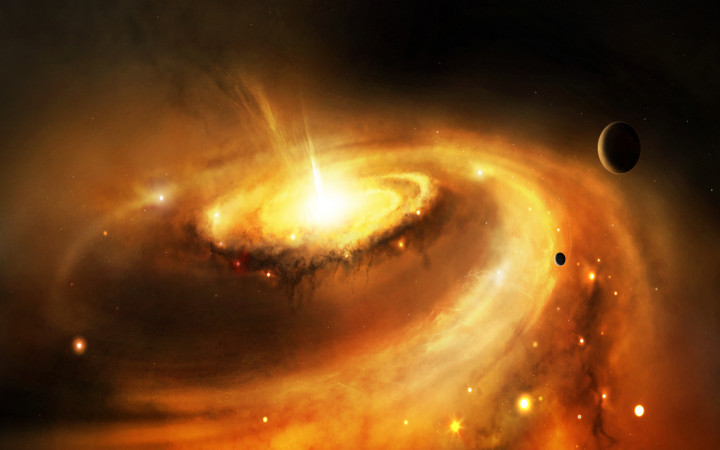Today’s Wonder of the Day was inspired by Eleanor. Eleanor Wonders, “What is the string theory?” Thanks for WONDERing with us, Eleanor!
What is the universe made of? This is the question that has fascinated scientists since the beginning of time. We've made good progress over the years toward understanding what makes up us and all the other "stuff" around us.
For example, we know that matter is made up of atoms. Eventually, we were able to look inside those atoms to discover that they're made up of three particles: electrons, protons, and neutrons. Scientists kept looking and found that protons and neutrons are made up of even smaller particles called quarks.
Today, the Standard Model of particle physics identifies 12 fundamental building blocks that make up the world: six quarks (up, down, charm, strange, bottom, and top) and six leptons (the electron, muon, tauon, and three neutrinos).
It also defines the four fundamental forces of the universe: gravity, electromagnetism, strong nuclear, and weak nuclear. So far, scientists have been able to use the Standard Model to describe with great precision each of these forces and the particles that act as their carriers…with one major exception: gravity.
Gravity is the most familiar force in our everyday lives and we can measure its effects easily. However, scientists still can't explain on a microscopic level why and how gravity works as it does. But there is hope.
Over the past several decades, theoretical physicists have been developing a new theory that looks like the most promising candidate for a microscopic, quantum theory of gravity yet: string theory.
More than providing an explanation of how gravity works, however, string theory has the potential to provide a unified and consistent — and just maybe complete — description of the fundamental structure of the entire universe. This is why some scientists have nicknamed string theory the "Theory of Everything."
Although string theory can be mind-boggling in its complexity and advanced mathematics, its core idea is that all the different basic particles in the universe are all different manifestations of one basic object: a string.
Where the Standard Model sees defined particles as points with no internal structure, string theory sees them as tiny loops of string that can move and oscillate in several different ways. A string that oscillates a certain way might be viewed by us (with our current technology) as an electron, whereas strings that oscillate in other ways might be seen as photons, quarks, etc.
One of the interesting parts of string theory is that scientists believe it points to a universe with 11 dimensions. To date, we only know of four dimensions: up/down, forward/backward, left/right, and time. What would those other seven dimensions be like? No one knows.
To date, string theory is still purely theoretical. No predictions from string theory have been made that would allow scientists to test it experimentally. That will hopefully change in the years to come, as scientists continue to explore string theory and the exciting hope it provides for a complete, unified theory of everything.




